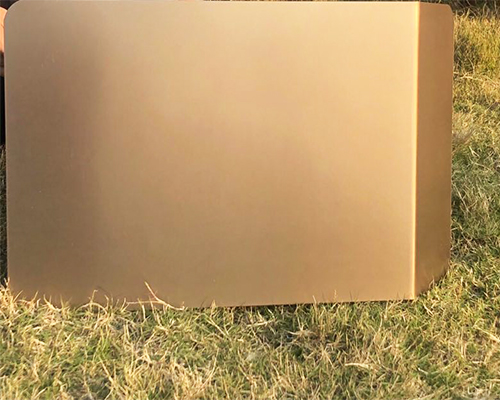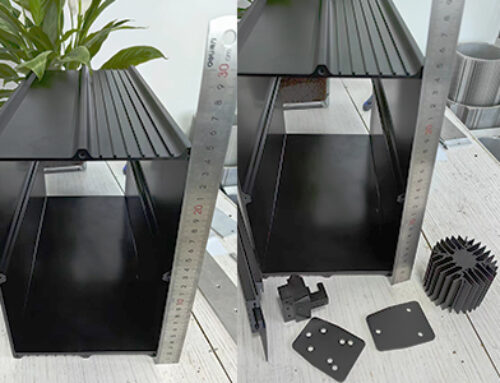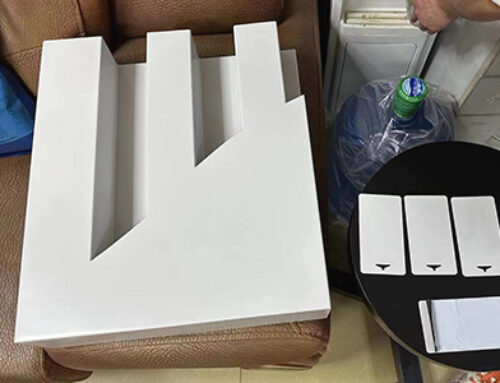Project Description
The anodizing process of aluminum alloy is that aluminum is used as an anode, placed in the electrolyte such as sulfuric acid, applied an anodic voltage to electrolyze, forming a layer of dense Al2O3 on the surface of Aluminum. The layer is a two-layer structure consisting of a dense barrier layer and a porous layer with a columnar structure. (Learn More: What is Anodising and Anodic Oxidation)


The anodic layer can be divided into two categories:
Porous Layer Anodizing — In sulfuric acid, oxalic acid and others formed a layer of very fine pores perpendicular to the surface;
Barrier Layer Anodizing — A nonporous, extremely thin layer formed in an electrolytic bath of ammonium borate and other neutral salts, which is commonly used in electrolytic capacitors, etc.
At present, the application of single anodized aluminum alloy building profiles in practice has been significantly reduced. The electrolytic coloring anodic coating, the organic coloring anodic coating, the porcelain anodic oxidation, the hard anodic oxidation coating, and the imitation stainless steel oxidation coating are widely used. Generally speaking, the factors that affect the aluminum alloy coloring are as follows:
Influence of Impurities in Electrolytic Solution
The coloring degree of aluminum alloy products mostly depends on the forming quality of the anodic layer. Therefore, in the sulfuric acid anodizing solution, the influence of impurities on the layer cannot be ignored. The impurities are mainly metal ions such as copper, iron, aluminum, and organic impurities.
- Copper ions will be replaced and deposited on the surface of aluminum parts, causing porosity of the anodic layer, and reducing transparency, corrosion resistance, and electrical insulation performance. Therefore, the content of copper ions is not allowed to exceed 0.02g/L.
- Chlorine ion comes from the cooling water after the tap water or the cooling pipe is broken. The content of chlorine ion should be lower than 0.2g/L, otherwise, the anodic layer generated is rough and loose, and the surface of aluminum parts will be eroded (breakdown) if it is serious.
- Aluminum ions in electrolyte increase gradually. When the content is greater than 25g/L, the conductivity of electrolyte decreases, and the surface of the workpiece presents white spots or blocklike white spots, and the adsorption capacity of the film decreases, making it difficult to dye.
- Iron ions in the electrolyte are not allowed to exceed 0.2g/L, or dark streaks and spots will appear.
- Organic impurities can hinder the formation of the anodic layer. After the layer adsorbs the oil, it causes uneven coloring and appearance of spots.


Factors Affecting the quality of Anodizing Layer Coloring
- If the deoiling process of pretreatment is not carried out completely, obvious white spots will appear on the film layer, which will be difficult to coloring.
- When the concentration of Sn salt in the electrolyte is too low, the coloring speed is slow. When the concentration is higher than 25g / l, the coloring speed is fast, but it is not easy to master, and the color difference is often big.
- When the temperature is lower than 15 ℃, the coloring speed is slow, if the temperature is too high, the coloring film will be fogged, and the SN salt is easy to hydrolyze and reverse, resulting in turbidity of bath solution.
- Time: Coloring time horizon also can affect coloring quality and color resistance, if coloring time is short, color fades easily, time is long, color and luster are too deep, the surface is easy to send a flower.
- When the coloring voltage is low, the coloring speed is slow, the color change is slow, easy to produce the color balance when the voltage is high, the coloring speed is fast, the coloring film is easy to peel off.
- Whether in anodic oxidation or electrolytic coloring, surfactant-based additives and stabilizers should be added to stabilize the layer formation speed and thickness, inhibit the dissolution of the anodic layer and improve the color uniformity.
In addition, pH value, water quality, coloring tank material have a certain impact on the coloring quality, only to ensure that the parameters in the control range, in order to ensure the quality of electrolytic coloring anodic layer.



